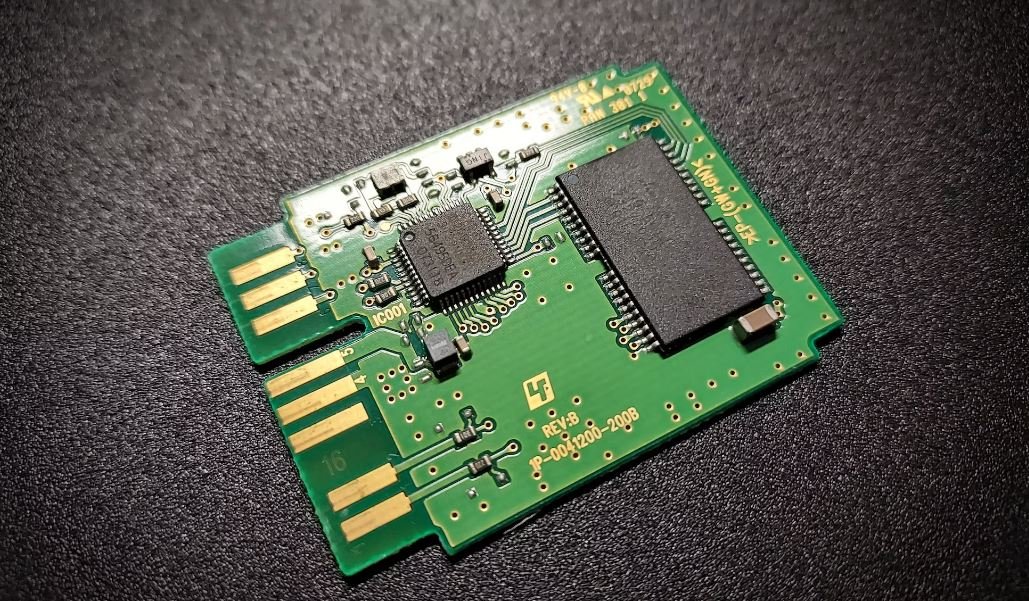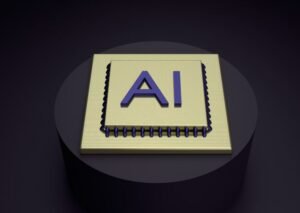AI Image Recognition Examples
Artificial Intelligence (AI) image recognition technology has seen significant advancements in recent years,
revolutionizing how computers perceive and interpret visual data. From self-driving cars to facial
recognition systems, AI-powered image recognition is being used in various domains to simplify and enhance
processes.
Key Takeaways
- AI image recognition technology enables machines to identify, classify, and understand
visual data. - Applications of AI image recognition include facial recognition, object detection,
autonomous vehicles, medical diagnostics, and more. - Deep learning algorithms are commonly used to power image recognition systems.
- AI image recognition enhances efficiency by automating tasks that require visual
interpretation.
Facial Recognition
Facial recognition is one of the most common applications of AI image recognition. By analyzing facial
features and patterns, advanced algorithms can identify individuals with a high degree of accuracy. This
technology is widely used in security systems, access control, identity verification,
and even social media tagging.
Object Detection
AI image recognition allows machines to detect and identify specific objects within images or videos. This
capability finds extensive use in fields like autonomous vehicles, surveillance systems,
robotics, and e-commerce. By identifying objects accurately, these systems can make
intelligent decisions and improve safety measures.
Medical Diagnostics
AI image recognition is transforming medical diagnostics by aiding healthcare professionals in disease
detection and treatment planning. Advanced algorithms can analyze medical images such as X-rays,
MRIs, and CT scans to identify abnormalities and assist in providing accurate diagnoses at a faster
pace. This technology helps improve patient outcomes and reduce human error.
Table 1: AI Image Recognition Use Cases
| Use Case | Example |
|---|---|
| Facial Recognition | Identifying individuals for security purposes. |
| Object Detection | Recognizing objects in autonomous vehicles to avoid collisions. |
| Medical Diagnostics | Detecting tumors on medical scans for early diagnosis. |
Deep Learning Algorithms
In order to achieve accurate and reliable image recognition, AI systems employ deep learning algorithms.
These algorithms learn from massive amounts of labeled data to identify patterns, features, and complex
relationships within images. Convolutional Neural Networks (CNNs) form the backbone of many image recognition
models and have proven to be highly effective for a wide range of visual recognition tasks.
Achieving Efficiency and Automation
By leveraging AI image recognition, organizations can significantly improve efficiency and automate tasks that
require visual interpretation. This technology can be implemented in various sectors, ranging from retail
and manufacturing to agriculture and transportation. It can help in inventory
management, quality control, crop monitoring, and more, reducing human effort and
errors.
Table 2: Benefits of AI Image Recognition
| Benefits | Description |
|---|---|
| Enhanced Efficiency | Automates visually-intensive tasks, improving productivity. |
| Improved Accuracy | Reduces human error in visual identification and interpretation. |
| Time Savings | Allows for swift and automated analysis of large amounts of visual data. |
Conclusion
AI image recognition technology has vast potential to revolutionize industries by enabling machines to perceive
and interpret visual data. With applications spanning from facial recognition to medical diagnostics, this
technology offers numerous benefits such as enhanced efficiency, improved accuracy, and time savings.
Table 3: AI Image Recognition Statistics
| Statistic | Value |
|---|---|
| Estimated market value by 2025 | $45.2 billion |
| Accuracy of top facial recognition systems | Over 99% |
| Number of medical studies using AI image recognition | Thousands |

Common Misconceptions
First misconception: AI image recognition is infallible
One common misconception people have about AI image recognition is that it is a perfect and flawless technology. However, this is not entirely true. While AI algorithms are highly advanced and constantly improving, they are still subject to errors and can sometimes misinterpret or misclassify images.
- AI image recognition algorithms can still produce incorrect results in certain scenarios
- No technology is completely infallible, and AI image recognition is no exception
- Misclassification or misinterpretation of images can occur due to various factors
Second misconception: AI image recognition understands context like humans
Another common misconception is that AI image recognition algorithms can understand the context of an image in the same way humans do. While AI models can be trained to recognize certain objects or patterns, they lack the ability to comprehend the deeper meaning or context behind those images.
- AI image recognition algorithms lack the ability to understand the broader context of images
- Human understanding of context involves complex reasoning and knowledge, which AI algorithms do not possess
- AI models primarily rely on pattern recognition and statistical analysis rather than contextual comprehension
Third misconception: AI image recognition is unbiased
Many people assume that AI image recognition is free from biases, but this is not the case. AI algorithms are trained on large datasets, and if these datasets contain biases or reflect societal prejudices, the AI image recognition system can inadvertently adopt and perpetuate those biases.
- AI image recognition algorithms can inherit biases present in the training data they are fed with
- Data collection methods and dataset composition can introduce biases into AI image recognition systems
- Addressing biases in AI image recognition requires careful consideration and diverse representation in the training data
Fourth misconception: AI image recognition can replace human judgment entirely
One common misconception is that AI image recognition can completely replace human judgment. While AI algorithms can assist and enhance human decision-making processes, they should not be solely relied upon. Human judgment, contextual understanding, and critical thinking are essential elements that AI image recognition cannot fully replicate.
- AI image recognition should be considered as a tool to augment human judgment, not replace it entirely
- Human intervention and interpretation are still necessary to validate and make sense of AI image recognition results
- AI algorithms are not capable of reasoning like humans can, and therefore human judgment is paramount in many cases
Fifth misconception: AI image recognition is only for big businesses or experts
Many people believe that AI image recognition is a complex technology that is only accessible and applicable to big businesses or experts in the field. However, AI image recognition is becoming increasingly accessible and user-friendly, with various platforms and tools available for individuals, small businesses, and organizations to leverage its benefits.
- AI image recognition tools are becoming more user-friendly and accessible to a wider range of users
- Small businesses and individuals can use AI image recognition to enhance their workflows and improve efficiency
- There are platforms and services that provide beginner-friendly interfaces for users to utilize AI image recognition without in-depth technical expertise

In recent years, artificial intelligence (AI) has made significant advancements in image recognition technology. From identifying objects and faces to determining emotions and gestures, AI-powered image recognition has revolutionized various industries. In this article, we will explore ten fascinating examples showcasing the capabilities of AI image recognition.
Example 1: Emotional Analysis in Customer Service
With AI image recognition, businesses can analyze facial expressions of customers in real-time during customer service interactions. This technology helps companies understand customer emotions, enabling them to personalize their service and provide a more satisfying experience.
Example 2: Medical Diagnosis Assistance
AI image recognition can assist healthcare professionals in diagnosing various medical conditions. By analyzing medical images such as X-rays and MRIs, AI algorithms can detect abnormalities or potential diseases, providing invaluable support to doctors in making accurate diagnoses.
Example 3: Autonomous Vehicles and Road Safety
AI image recognition plays a crucial role in autonomous vehicles, enabling them to identify and react to objects and road conditions in real-time. From recognizing traffic signs and pedestrians to detecting obstacles, AI helps ensure the safety and efficiency of self-driving cars.
Example 4: Security Surveillance Enhancement
By using AI image recognition, security systems can efficiently monitor and analyze video footage, detecting suspicious activities or identifying individuals in real-time. This technology enhances the effectiveness of security surveillance, making public spaces safer.
Example 5: Animal Species Identification
AI image recognition can identify various animal species by analyzing their physical characteristics. This capability is particularly useful in wildlife conservation efforts, enabling researchers to track populations and protect endangered species more effectively.
Example 6: Crop Disease Detection
In agriculture, AI image recognition assists farmers in identifying crop diseases early, allowing for prompt intervention. By analyzing images of plants, AI algorithms can detect patterns associated with diseases and help prevent extensive damage to crops.
Example 7: Art Authenticity Verification
AI image recognition enables experts to verify the authenticity of art pieces by analyzing intricate details such as brush strokes and age indicators. This technology provides an additional layer of security and ensures the integrity of valuable artworks.
Example 8: Retail Visual Search
With AI image recognition, customers can use visual search features to find products similar to images they capture or upload. This technology simplifies the shopping experience, allowing users to discover items without having to rely solely on product descriptions.
Example 9: Facial Recognition for Access Control
AI-powered facial recognition systems are widely used for access control in various settings. From unlocking smartphones to granting access to secure facilities, this technology ensures reliable and convenient verification of individuals’ identities.
Example 10: Environmental Monitoring
AI image recognition is used to monitor and analyze environmental conditions such as air quality, pollution levels, and ecosystem changes. By collecting and processing image data, AI helps scientists and policymakers make informed decisions for environmental preservation.
In conclusion, AI image recognition has opened up countless possibilities across different sectors. From healthcare and agriculture to security and retail, the application of this technology has significantly enhanced efficiency, accuracy, and overall user experience. As AI continues to advance, we can expect even more exciting developments in image recognition, further transforming various industries for the better.
Frequently Asked Questions
What is AI image recognition?
AI image recognition, also known as computer vision, refers to the technology that allows computers and machines to analyze and interpret visual data. It involves training artificial intelligence systems to recognize and identify objects, scenes, patterns, or features in images or videos.
How does AI image recognition work?
AI image recognition uses complex algorithms and machine learning techniques to process and analyze pixels of an image. It involves breaking down the image into smaller components, extracting features, and comparing them against a pre-trained data set or model. The model learns from labeled examples to classify and recognize objects or patterns with a high level of accuracy.
What are some examples of AI image recognition applications?
AI image recognition finds applications in various industries and domains. Some examples include:
- E-commerce: Automatically identifying products from images for online shopping
- Medical diagnosis: Detecting diseases from medical images like X-rays or CT scans
- Social media: Analyzing and tagging photos on social platforms
- Surveillance: Monitoring and identifying objects or persons in security systems
- Autonomous vehicles: Recognizing traffic signs, pedestrians, and obstacles for safe driving
What are the benefits of AI image recognition?
AI image recognition offers several benefits, such as:
- Improved efficiency: Automates the process of analyzing and understanding visual data
- Increased accuracy: Can detect objects or patterns with high precision
- Time-saving: Reduces manual efforts in analyzing large volumes of images or videos
- Enhanced decision-making: Provides valuable insights and actionable information
What are the challenges of AI image recognition?
AI image recognition still faces some challenges, including:
- Training data: Requires large and diverse datasets for training reliable models
- Complexity: Analyzing and interpreting visual data accurately can be complex
- Generalization: Ensuring the model can recognize objects in various conditions or perspectives
- Ethical considerations: Addressing issues like privacy, bias, and fairness in image recognition
How accurate is AI image recognition?
The accuracy of AI image recognition depends on various factors such as the quality and diversity of the training data, the complexity of the task, and the performance of the specific algorithm or model used. Advanced AI systems can achieve high accuracy rates, rivaling or even surpassing human-level performance in certain tasks.
Can AI image recognition be fooled?
AI image recognition can be fooled by intentionally manipulating or adding specific elements to an image to mislead the system. This is known as adversarial attacks. Researchers are continuously working on developing robust models that are resistant to such attacks.
What are some popular AI image recognition frameworks and libraries?
Some popular frameworks and libraries for AI image recognition include:
- TensorFlow
- PyTorch
- Keras
- Caffe
- OpenCV
Are AI image recognition systems biased?
AI image recognition systems can be biased if the training data used to develop the models contains biases. If the training data is not diverse and representative, the system may produce biased results. Addressing bias in AI systems is an ongoing research area, and efforts are being made to improve fairness and reduce bias in image recognition models.




